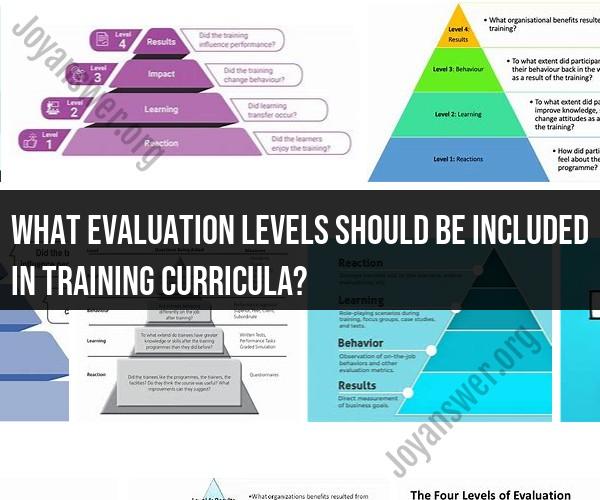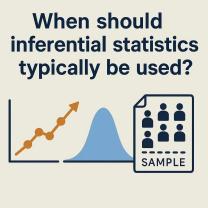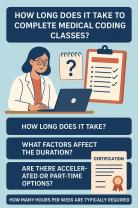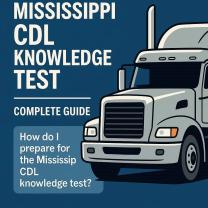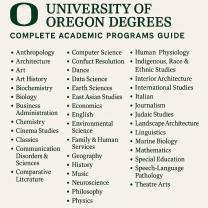What evaluation levels should be included in training curricula?
When evaluating training curricula, it's important to use a comprehensive approach that considers multiple levels of evaluation to assess the effectiveness and impact of the training. The most commonly used framework for this is Kirkpatrick's Four-Level Model of Evaluation, which consists of four levels:
Level 1: Reaction (Satisfaction):
- This level assesses how participants react to the training, including their satisfaction, engagement, and perceived relevance of the training content. Common evaluation methods include post-training surveys, feedback forms, and focus group discussions.
Level 2: Learning (Knowledge and Skill Acquisition):
- This level assesses the extent to which participants have acquired new knowledge and skills as a result of the training. Evaluation methods may include pre- and post-training tests, quizzes, observations, and skills assessments.
Level 3: Behavior (Transfer of Learning):
- This level examines whether participants are applying what they've learned in their work or daily activities. It assesses the transfer of knowledge and skills from the training environment to the job. Evaluation methods might involve on-the-job observations, interviews with supervisors, and self-assessment by participants.
Level 4: Results (Impact):
- This level assesses the broader impact of the training on organizational goals and performance. It looks at whether the training has had a positive effect on productivity, quality, safety, or other key performance indicators. Evaluation methods can include key performance metrics, cost-benefit analysis, and feedback from stakeholders.
In addition to these four levels, some training evaluations also incorporate a fifth level:
- Level 5: Return on Investment (ROI):
- This level calculates the financial return on investment resulting from the training. It compares the costs of the training program to the financial benefits achieved through improved performance, productivity, or other measurable outcomes.
The choice of which evaluation levels to include in your training curriculum depends on the objectives of the training, available resources, and the organization's specific needs. Not all training programs will require a Level 5 evaluation, as calculating ROI can be complex and resource-intensive. However, it's valuable for assessing the financial impact of larger training initiatives.
It's important to conduct evaluations at multiple levels to gain a holistic understanding of the training's effectiveness. This information can inform improvements in the curriculum, demonstrate the value of the training to stakeholders, and ensure that training initiatives are aligned with organizational goals and objectives.
Designing Effective Training Curricula: The Importance of Evaluation
Evaluation is an essential part of designing effective training curricula. It allows you to measure the effectiveness of your training programs and to identify areas for improvement. By evaluating your training programs, you can ensure that they are meeting the needs of your learners and that they are helping them to achieve their learning objectives.
Levels of Evaluation in Training Curricula
There are four main levels of evaluation in training curricula:
- Reaction: This level of evaluation assesses the learners' immediate reaction to the training program. It can be measured through surveys, feedback forms, or interviews.
- Learning: This level of evaluation assesses whether the learners have acquired the knowledge and skills that were taught in the training program. It can be measured through tests, quizzes, or performance assessments.
- Behavior: This level of evaluation assesses whether the learners are applying the knowledge and skills that they learned in the training program on the job. It can be measured through observation, performance reviews, or customer satisfaction surveys.
- Results: This level of evaluation assesses the overall impact of the training program on the organization. It can be measured through metrics such as increased productivity, reduced costs, or improved customer satisfaction.
Assessing Training Effectiveness Through Multiple Perspectives
It is important to assess training effectiveness from multiple perspectives. This will give you a more complete picture of how well your training programs are working. Some perspectives to consider include:
- Learners: Get feedback from learners about their experience with the training program. This feedback can help you to identify areas for improvement.
- Managers: Get feedback from managers about how the training program is impacting their team members' performance.
- Customers: If the training program is designed to improve customer service, get feedback from customers about their experience with the company's employees after they have completed the training.
Practical Tips for Implementing Comprehensive Training Evaluations
Here are some practical tips for implementing comprehensive training evaluations:
- Set clear goals for your evaluations. What do you want to learn from your evaluations? Once you know what you want to learn, you can develop evaluation tools and methods that will help you to achieve your goals.
- Use a variety of evaluation methods. No single evaluation method can give you a complete picture of the effectiveness of your training program. Use a variety of methods, such as surveys, interviews, tests, and performance assessments, to get a more complete picture.
- Collect data from multiple perspectives. As mentioned above, it is important to collect data from multiple perspectives to get a complete picture of the effectiveness of your training program. Get feedback from learners, managers, and customers.
- Analyze your data carefully. Once you have collected your data, analyze it carefully to identify trends and patterns. This information can help you to identify areas for improvement in your training programs.
- Use your findings to improve your training programs. The most important step in the evaluation process is to use your findings to improve your training programs. This may involve making changes to the content, delivery, or assessment methods.
Using Evaluation Data to Improve Training Programs
Here are some specific ways to use evaluation data to improve your training programs:
- Use learner feedback to identify areas for improvement. Learner feedback can be used to identify areas where the training program is not meeting the needs of learners. For example, if learners are consistently struggling with a particular concept, you may need to revise the training materials or provide additional support.
- Use manager feedback to assess the impact of the training program on performance. Manager feedback can be used to assess the impact of the training program on employee performance. For example, if managers are reporting that their team members are more productive or providing better customer service after completing the training program, then you know that the training is having a positive impact.
- Use customer feedback to assess the impact of the training program on customer satisfaction. Customer feedback can be used to assess the impact of the training program on customer satisfaction. For example, if customers are reporting that they are more satisfied with the company's products or services after interacting with employees who have completed the training program, then you know that the training is having a positive impact.
By using evaluation data to improve your training programs, you can ensure that they are meeting the needs of your learners and that they are helping them to achieve their learning objectives.
